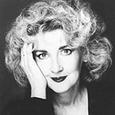The Artist’s Way is the seminal book on the subject of creativity. An international bestseller, millions of readers have found it to be an invaluable guide to living the artist’s life. Still as vital today—or perhaps even more so—than it was when it was first published one decade ago, it is a powerfully provocative and inspiring work.
With the basic principle that creative expression is the natural direction of life, Julia Cameron and Mark Bryan lead you through a comprehensive twelve-week program to recover your creativity from a variety of blocks, including limiting beliefs, fear, self-sabotage, jealousy, guilt, addictions, and other inhibiting forces, replacing them with artistic confidence and productivity.
This book links creativity to spirituality by showing how to connect with the creative energies of the universe, and has, in the four years since its publication, spawned a remarkable number of support groups for artists dedicated to practicing the exercises it contains.
Julia Cameron is an award-winning poet, playwright, filmmaker, and author of more than 25 books, including The Artist’s Way. Her works range from fiction to beloved volumes of prayers and children’s poems. A writer since the age of 18, she has written for most major national publications, including Rolling Stone and The New York Times.
Cameron is internationally known for her work on creativity. Her teaching and workshops on unlocking creativity inspired the international bestseller, The Artist’s Way, which has sold nearly a million and a half copies worldwide. The book links creativity to spirituality by showing how to connect with the creative energies of the universe. Her follow-up bestsellers include The Vein of Gold and The Right to Write.
Cameron is credited with having founded a new human potential movement, which has enabled millions of people to realize their creative dreams. Yet she prefers to describe herself simply as an “artist.” Cameron has taught The Artist’s Way workshops to such places as the Smithsonian and The New York Times, and her work is frequently taught in theological degree programs as well as in the arts.

Post new comment
Please Register or Login to post new comment.